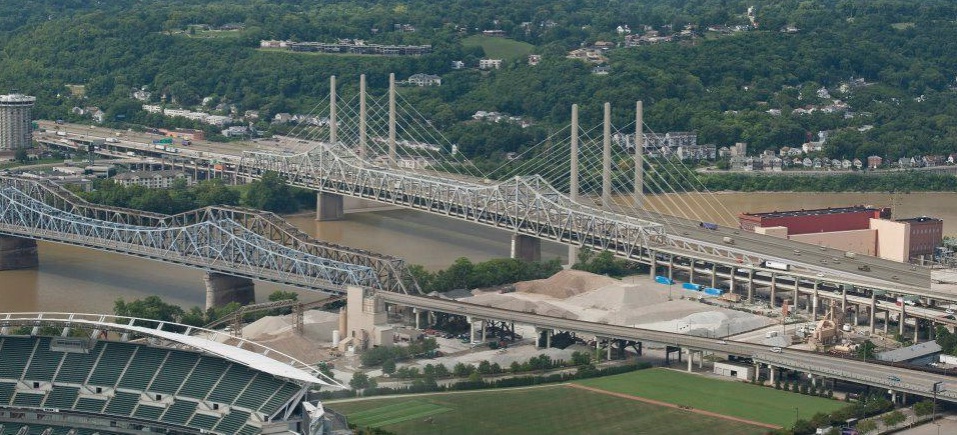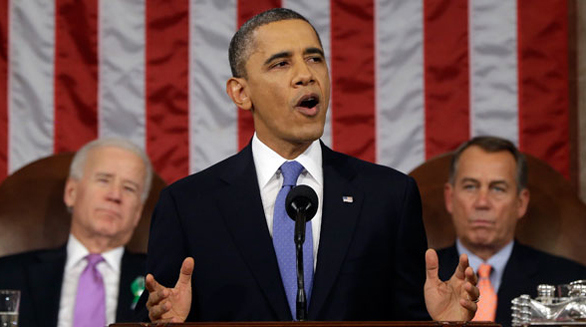President Barack Obama (D) delivered the annual State of the Union address last evening. The hour-long speech covered a wide range of topics including gun control, military policy, immigration reform, voting rights, domestic economic programs, education reform, and energy policy.
One of the most-discussed topics of the evening was when the President announced his aspirations to see the national minimum wage raised to $9 an hour. The current minimum wage of $7.25 an hour results in an annual income of $14,500 – a number the President says keeps families with two minimum wage earners below the poverty line.
In 2006, Ohioans voted to raise the state’s minimum wage from $5.15 an hour to $6.85 an hour, with an annual cost-of-living escalator.
“This single step would raise the incomes of millions of working families,” President Obama stated. “It could mean the difference between groceries or the food bank; rent or eviction; scraping by or finally getting ahead. For businesses across the country, it would mean customers with more money in their pockets.”

The President called for a “Fix-It-First” program during his State of the Union address, but will it make a difference for Cincinnati’s Brent Spence Bridge Rehabilitation/Replacement project? Brent Spence Bridge replacement Alternative 1 (TOP) and Alternative 2 (BOTTOM) renderings provided.
Since the last time Congress voted to increase the federal minimum wage, which is effective for all states that have a minimum wage lower than the federal level, 19 different states have voted to raise their respective rates. The President’s $9 an hour proposal with an annual cost-of-living escalator would place it above every state in the union with the exception of Washington which pays its lowest earning workers $9.19 an hour.
In addition to raising the pay for the nation’s lowest earners, the President also pushed for new programs meant to spur job growth in a new economy. He called for the reform of high school education to more effectively train graduates to be able to fill high-tech jobs.
He also asked Congress to create a network of 15 manufacturing innovation hubs, modeled after the National Additive Manufacturing Innovation Institute (NAMII) established in Youngstown, OH in August 2012. Those cities selected, the President says, would work to partner businesses with the Department of Defense and Energy.
The President stated that the goal is to transform “regions left behind by globalization into global centers of high-tech jobs” in an effort to jumpstart the next revolution in manufacturing.
The advanced manufacturing policy proposal is one that should certainly catch the attention of local policy leaders as they work to transform Cincinnati’s Mill Creek Valley into a productive economic engine for the 21st century, as laid out in the Growth & Opportunities Cincinnati Plan published in 2008.
Another point of emphasis during the President’s first State of the Union address of his second term revolved around repairing the nation’s existing built environment.
To that end, he discussed retrofitting buildings to become more energy efficient, and announced a goal to cut energy wasted by homes and businesses in half over the next 20 years. President Obama continued by calling for a program that would prioritize infrastructure spending on existing assets in need of repair, like Ohio and Kentucky’s combined 4,054 deficient bridges.
“I propose a ‘Fix-It-First’ program to put people to work as soon as possible on our most urgent repairs,” said President Obama. “And to make sure taxpayers don’t shoulder the whole burden, I’m also proposing a Partnership to Rebuild America that attracts private capital to upgrade what our businesses need most: modern ports to move our goods; modern pipelines to withstand a storm; modern schools worthy of our children.”
Perhaps the biggest bi-partisan applause of the night went to the President’s condemnation of gun violence and call for action to prevent further atrocities like those at Sandy Hook Elementary School, and those that occur on the streets of America’s cities every day.
“Our actions will not prevent every senseless act of violence in this country. Indeed, no laws, no initiatives, no administrative acts will perfectly solve all the challenges I’ve outlined tonight,” President Obama clarified. “But we were never sent here to be perfect. We were sent here to make what difference we can, to secure this nation, expand opportunity, and uphold our ideals through the hard, often frustrating, but absolutely necessary work of self-government.”

